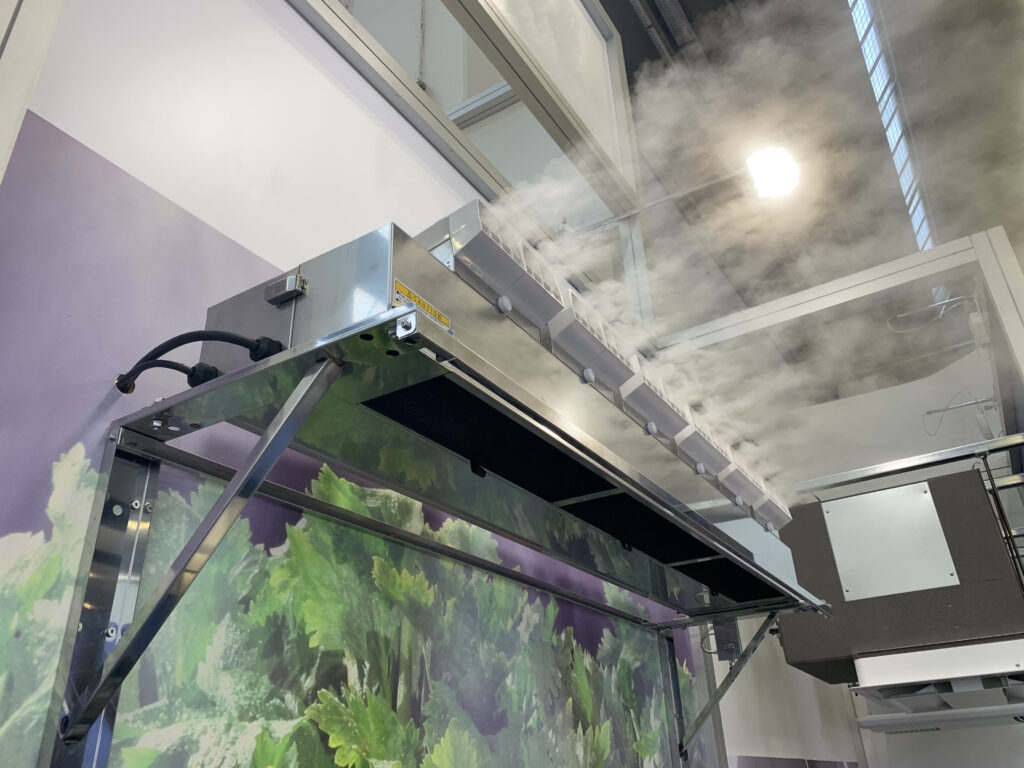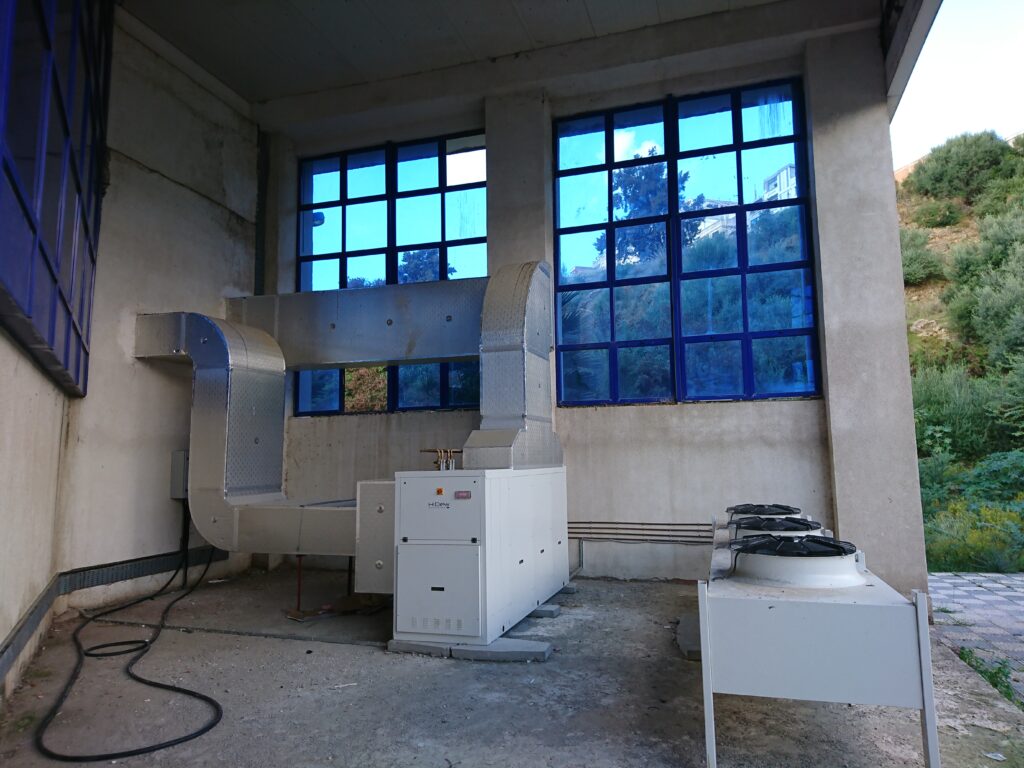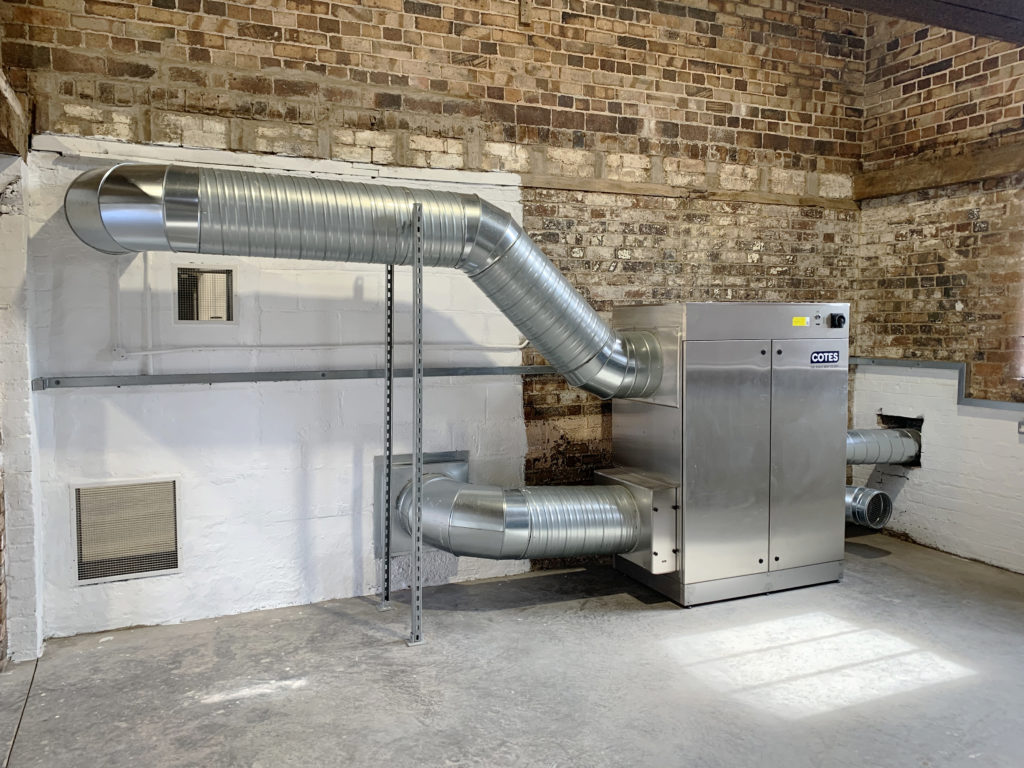Energy efficiency is a key consideration in the decision-making process of any financial investment – no more so than in recent months.
As specialists in humidity control, Humidity Solutions is frequently asked for advice about low-energy systems and, by identifying a few key application criteria, we can make a sound recommendation.
Firstly, we would look at whether the application requires a humidifier, dehumidifier or both. Secondly, does the application requires cooling? If so, an adiabatic humidifier can assist in providing low-energy cooling. Thirdly, what is the duty required?
Humidification
Humidity can be added to the air by either boiling the water to generate steam, spraying/atomising water or by evaporation.
Steam humidifiers will unavoidably use a lot of energy in the isothermal process of changing the physical state of the water from a liquid to a gas (steam). However, as a system this process may provide the most energy-efficient way of adding humidity.
Low-energy humidifiers are generally adiabatic systems which include ultrasonic, high-pressure spray and evaporative humidifiers. Because no heat energy is required the power source is only to power oscillators in the case of the ultrasonics or small pumps in the case of the evaporative or spray system. Consequently, these use approximately 10% of the energy to run the humidifiers compared with steam generation. In addition, these cold water humidifiers provide cooling to the air which can reduce the load on traditional air conditioning.

Two energy savings in one system results in potentially lower running costs for the temperature/humidity control after adding the humidifier.
The system design also needs to be considered to determine which method of cold water humidification is best suited.
Large direct air systems are generally spray systems, small laboratories or test chambers are often suited to the ultrasonics while data centres and manufacturing process control frequently favour evaporative systems.
Despite using a lot of energy themselves, steam humidifiers may in some cases be the low-energy option for the system.
The reason for this is that adiabatic humidifiers, while using a small amount of energy themselves, do cool the air. This can be a great advantage in environments where excess heat is a by-product of the process, or in warmer climates. However, if the building or process requires heating, then this cooling effect is not welcome and requires additional heat energy to be added to the air. This heat energy equates to the amount of energy difference between a similarly sized adiabatic system versus a steam humidifier – so no system energy saving.
Retrofit systems or new designs may require a larger heating coil to be added to provide this extra heat, larger burners and bigger heat pumps, all of which come at a capital and running cost.
Taking the energy source into account and the cost per kW is also part of the calculation. It takes the same amount of energy to convert water to steam whatever the technology. However, where energy can be saved is in the way that the system prevents condensation, which when produced is essentially throwing energy down the drain.
So we can also make the steam humidifiers as efficient as possible – the normal steam humidifier has a drain cycle to remove dissolved solids from the steam cylinder to extend the maintenance period. However, by adding a reverse osmosis plant we can remove the minerals before entering the boiling process – the drain cycle is no longer needed so can be turned off which stops hot, heated water from going to the drain and making this system 20% more energy efficient than a standard set up.
For additional energy saving the solution from Humidity Solutions is Neptronic X-stream Technology, which is a high-efficiency insulated steam distribution multi-lance with patented steam ejector eyelets to distribute the hottest steam into the airflow. The double wall 304 stainless steel tubes are filled with Armacell to provide insulation to greatly reduce heat loss and therefore limit the condensate generation.
Specially engineered silicone eyelets prevent condensate ejection on start-up and allow the condensate to flow back into the X-stream to be reevaporated so again reducing the condensate loss and increasing efficiency.
Dehumidification
There are two types of dehumidifiers – refrigerant and desiccant.
The refrigerant dehumidifiers have a cold coil which drops the passing air down to below its dew point causing the moisture in the air to condense with the water going to drain. This type of dehumidifier is ideal for warm environments above 10°C and where the humidity needs to be kept at 40%rh and above – ideal for swimming pools, laboratories and temperature-controlled storage facilities.
Keeping the humidity at the desired level of around 50%rh can result in energy efficiency as the air heat levels can be reduced without the humidity creating ceiling condensation – which in the case of swimming pools, for example, results in less water evaporation from the swimming pool and reduced pool heating costs.

Desiccant dehumidifiers use a silica rota to remove the moisture from the air and vent the moisture as humid air to the outside. These dehumidifiers are best suited for unheated stores or where low humidity is required.
In the case of lithium-ion battery production, for example, the humidity is at 0%rh (-120°C dewpoint). With ultradry battery production, Cotes dehumidifiers are constructed with three rotas to allow the dehumidifier to run at lower temperatures and a two-rota system which facilities the use of alternative sources of energy such as heat pumps, using process waste heat and solar. This greatly reduces the running costs of not only the dehumidifier but the whole manufacturing process.
More standard applications such as unheated car storage use a built-in heat recovery unit to harvest the waste heat ensuring maximum efficiency and the lowest possible energy consumption.

Energy-efficient humidity control is not only possible, but achievable. We can see from the above that the choice of humidifier or dehumidifier, specific application and use of additional accessories all require scrutiny and assessment to create the best possible energy-efficient humidity control for your application or process.
Humidity control is not a day-to-day topic for many contractors and consultants which is why it is key to seek advice from experts who can offer a range of solutions from a selection of manufacturers.
Humidity Solutions can install or advise on installation, as well as provide or recommend planned maintenance to ensure that the optimum solution provides the best humidity control and the lowest running costs throughout the life of the equipment.



